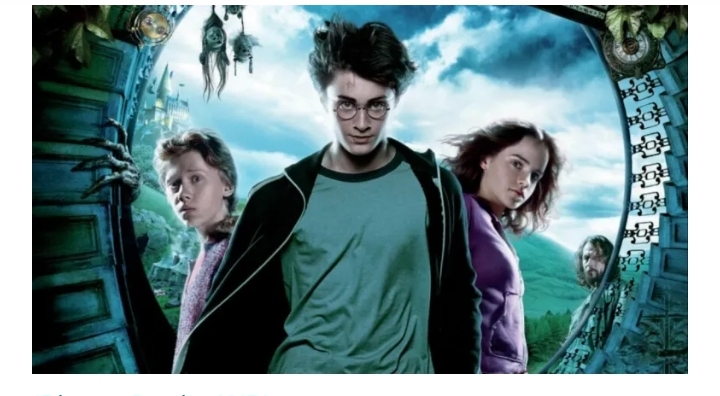CELEBRITY
Harry Potter and the Prisoner of Azkaban Forever Changed the Series

Remember the good old days when a new Harry Potter movie or book arrived seemingly every year to provide us with whimsical, youthful entertainment? From 1997 until 2011, JK Rowling’s Boy Who Lived dominated all facets of pop culture and, in many ways, paved the way for the now tiresome cinematic universe template followed by nearly every major film studio. The first two installments, Harry Potter and the Sorcerer’s Stone and Harry Potter and the Chamber of Secrets, introduced us to the enchanting Wizarding World. The third chapter, Harry Potter and the Prisoner of Azkaban, takes a daring turn, steering the boy wizard towards a darker path.
This shift deepened the series’ lore and raised the stakes significantly for our beloved trio —Harry, Ron, and Hermione. Interestingly, this was also true for the film adaptations.
Life Before Azkaban
In 1997, JK Rowling’s Harry Potter and the Sorcerer’s Stone hit store shelves, igniting a global phenomenon and selling over 120 million copies. A year later, the author conjured more gold with the sequel Chamber of Secrets, followed quickly by Prisoner of Azkaban in 1998.
Admittedly, I was late to the party. My mom purchased Sorcerer’s Stone in the summer of 1999 and urged me to give it a shot. Immediately, I was swept away by this strange new universe of witches, goblins, and wizards structured around a Hardy Boys-like mystery involving the evil Lord Voldemort. Harry, Ron, and Hermione were likable, bite-sized versions of Han, Luke, and Leia, albeit outfitted with wands and broomsticks instead of lightsabers and spaceships. I wanted more. Luckily, Chamber of Secrets waited at the local bookstore for my eager eyes to devour.
Chamber lacked the narrative thrust of its predecessor and felt like more of a rehash than a novelty. Our heroes once again find themselves caught in a mystery and must solve the case before it’s too late. Moreover, Chamber felt like a children’s story — which it was — and seemed to lack the darker elements that made Sorcerer’s Stone so gripping. I may have even tossed the book aside for a spell, returning to it only after others urged me along.
I don’t know what summoned me to Azkaban. Maybe a friend recommended it, or perhaps Chamber hit a nerve in its final chapters, prompting me to continue Harry’s quest. At any rate, I purchased the third book in Rowling’s franchise and couldn’t put it down. Where Sorcerer’s Stone piqued my interest, Prisoner of Azkaban hooked me for life. Dark, thrilling, and surprising, the third installment knocked me off my feet with its clever twists and turns, mature tone, and exciting action. I read it multiple times that summer.
The five remaining books likewise darkened the tone and further expanded the Wizarding World. As good as they were — and they were all pretty damned great — none had the same impact as Prisoner of Azkaban. The book changed the franchise for the better, introducing critical aspects to the story (notably important information about Harry’s father, James, and his slippery rival, Snape), essential characters, and the fragility of adolescence. To quote Ron, it’s “bloody brilliant.”
The Movie Series
Hollywood sniffed success, launching a bidding war that ultimately ended with Warner Bros. obtaining the rights to Harry Potter. The studio asked Steven Spielberg to direct the first adaptation and, after he said no, turned to Chris Columbus.
The Home Alone director quickly went to work and presented Harry Potter and the Sorcerer’s Stone on Christmas of 2001. Predictably, the first entry proved a massive success, earning $974.8M worldwide (or $1.4 billion today). Chamber of Secrets likewise struck box office gold, collecting $879.5M in 2002.
Critical reaction to the first two chapters was positive but tepid. Many agreed that Columbus effectively captured Rowling’s magic but didn’t add anything to the material. His films dutifully recreated the novels, crafting fun but safe adaptations that never ventured too far from the source material.
Surprisingly, Columbus vacated the director’s chair after this hot start. In his place, Warner Bros. tapped acclaimed director Alfonso Cuarón, known for helming mature pictures such as 2001’s Y Tu Mamá También.
Two years later, Prisoner of Azkaban soared into theaters to tremendous acclaim. Critics lauded Cuarón’s more pronounced visual style, the performances of Daniel Radcliff, Emma Watson, and Rupert Grint, and a creative approach that shifted the series from staunch retread to a magical world of endless possibilities.
Cuarón makes his presence known from the bouncy opening titles. His camera zips in and out of Harry’s bedroom as our young hero practices magic spells:











